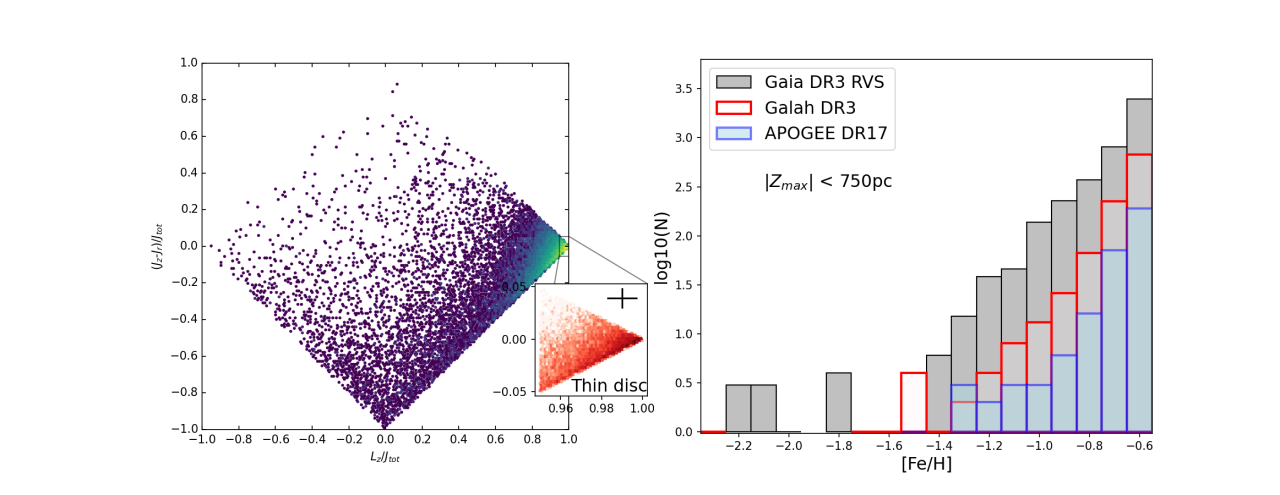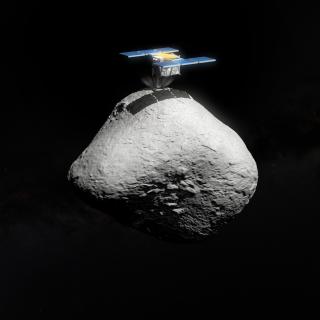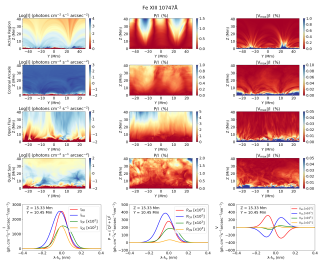Left panel: Action space (normalized to the sum of the three actions of motion, Jtot) of Gaia RVS stars with metallicities [Fe/H]<−0.55, along with a zoom-in of the area that we use to select our thin disc sample. The x-axis displays the normalized angular momentum, which is equivalent to the azimuthal action of motion, and the y-axis the normalized difference of vertical action and radial action. Their mean uncertainties are displayed in black in the top right corner. Right panel: Metallicity distribution functions, in logarithmic scale, derived from our thin disc samples of Gaia DR3 RVS, GALAH, and APOGEE stars.
The formation and evolution of the disk of our Galaxy, the Milky Way, remains an enigma in astronomy. In particular, the relationship between the thick disk and the thin disk —two key components of the Milky Way— is still unclear. Understanding the chemical and dynamical properties of the stars within these disks is crucial, especially in the parameter spaces where their characteristics overlap, such the metallicity regime around [Fe/H] ~ -0.7, which marks the metal-poor end of the thin disk, higher than that of the thick disk. This is often interpreted as an indication that the thin disk formed in later stages than the thick disk, in a more chemically enriched environment.
In this study, we delve deeper into the recent discovery of a group of stars with a lower metal content that move at velocities similar to those of the thin disk. These stars, with metallicity values between -2 < [Fe/H] < -0.7 were identified from estimates based on photometric data and their rotational velocities. However, metallicities derived from photometric data usually come with higher uncertainties, and the rotational component of the velocity alone does not guarantee that these stars follow orbits typical of the thin disk. Therefore, a more thorough characterization of their kinematic properties and confirmation of their low metallicity with more precise estimates, such as those provided by spectroscopy, was necessary.
To achieve this, we analyzed the chemical and dynamical properties of these stars using the most recent data from the Gaia mission (DR3), which includes the first catalog of metallicity estimates along with a range of elemental abundances from the Radial Velocity Spectrometer (RVS) experiment. The Gaia mission is the most comprehensive star survey of the Milky Way to date and offers the opportunity to explore previously inaccessible stellar populations. To complement this analysis, we used data from the two largest high-resolution spectroscopic surveys available: GALAH DR3 and APOGEE DR17.
Our findings confirm the existence of stars with high angular momentum that move in orbits similar to those of the thin disk, close to the Galactic plane (within 750 pc), and with metallicity values as low as [Fe/H] ~ -1.5. Additionally, we found tentative evidence of stars on similar orbits at even lower metallicities, down to [Fe/H] ~ -2.5, although in smaller numbers. The chemical characterization suggests that stars with thin-disk-like orbits and metallicities less than [Fe/H] < -1 likely formed in a less chemically evolved environment than the bulk of the thick disk. However, our study confirms that most stars with chemical compositions and orbital parameters typical of the thin disk are found at metallicities between -1 and -0.7. While the uncertainty regarding the origin of the disk persists, studies like this help deepen our understanding of the star populations within it, opening new possibilities for better understanding its history.




